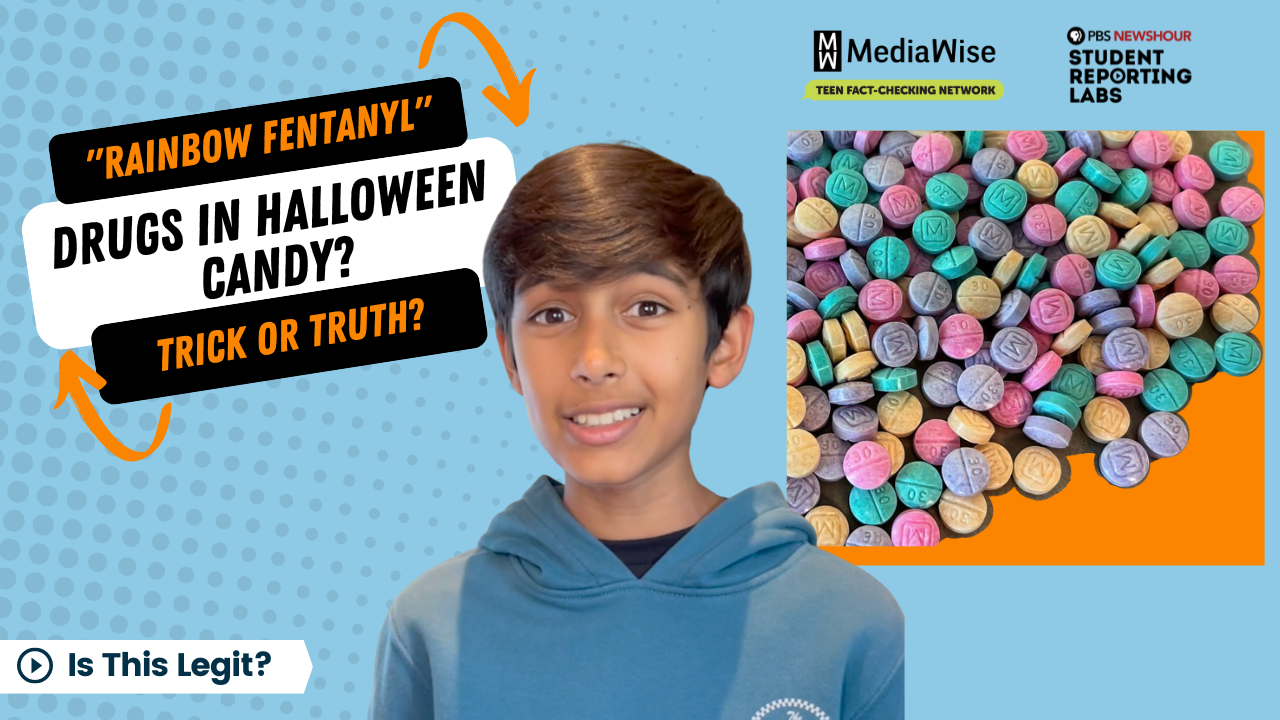For teachers: This MediaWise Teen Fact-Checking Network video has an accompanying lesson plan free for any teacher use. Created through a partnership with PBS NewsHour Student Reporting Labs, the lessons meet state standards and help your students separate fact from fiction online.
“Watch your kids’ candy!”
“Looks like SweeTarts!”
Halloween’s coming, and you may be seeing social media posts like these about the dangers of brightly colored pills sometimes called “rainbow fentanyl.” But are drug dealers really targeting kids on Halloween?
This is how we fact-checked it.
Check your emotions
Every year it seems like kids are being warned about razor blades in apples, needles in chocolate and poisoned Pixie sticks. Well, here’s a media lit tip: If something seems really scary, it might not be totally true. Let’s take a look at the bigger picture and figure it out.
Do a keyword search
We did a Google keyword search of “Halloween candy dangers 2022” and found this article, which quotes University of Delaware professor Joel Best, probably the nation’s top expert on Halloween candy rumors — his data dates back to 1958.
And what he says might surprise you: “I cannot find a single case of a child killed or seriously injured by a contaminated treat picked up in the course of trick-or-treating.”
Best does cite one exception. A father in 1974 laced his children’s candy with cyanide, killing one, in an effort to collect life insurance. He was arrested.
But, as Best said, “that’s not what people are worried about when they ask whether it’s safe to go trick-or-treating.”
Look for latest information
Back to this year’s scare: “rainbow fentanyl.” This story originated with an August press release from the Drug Enforcement Administration. The headline said, “DEA Warns of Brightly-Colored Fentanyl Used to Target Young Americans” — which freaked out a lot of parents.
But a more recent DEA statement clarifies the original warning, saying that while it’s true that fentanyl is an extremely dangerous drug, the DEA does not believe children are at risk of being given fentanyl when they go trick-or-treating.
Another final media literacy tip: Read past the headlines, and always make sure you have the latest information.
Rating
Not Legit. While the DEA does believe that fentanyl is dangerous, the agency does not believe that drug dealers will be pushing it on children this Halloween.
ATTENTION TEACHERS: This fact-check is featured in a free, one-hour lesson plan called “Trick or truth? Why social media posts hit the misinformation sweet tooth.” It is available through PBS NewsHour Classroom, and includes slides and a handout, among other resources for teachers.






